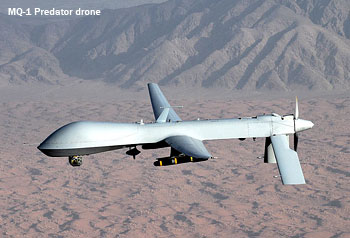INDIAN ARMED FORCES CHIEFS ON OUR RELENTLESS AND FOCUSED PUBLISHING EFFORTS

The insightful articles, inspiring narrations and analytical perspectives presented by the Editorial Team, establish an alluring connect with the reader. My compliments and best wishes to SP Guide Publications.

"Over the past 60 years, the growth of SP Guide Publications has mirrored the rising stature of Indian Navy. Its well-researched and informative magazines on Defence and Aerospace sector have served to shape an educated opinion of our military personnel, policy makers and the public alike. I wish SP's Publication team continued success, fair winds and following seas in all future endeavour!"

Since, its inception in 1964, SP Guide Publications has consistently demonstrated commitment to high-quality journalism in the aerospace and defence sectors, earning a well-deserved reputation as Asia's largest media house in this domain. I wish SP Guide Publications continued success in its pursuit of excellence.
- The layered Air Defence systems that worked superbly, the key element of Operation Sindoor
- Operation Sindoor | Day 2 DGMOs Briefing
- Operation Sindoor: India strikes back with Precision and Purpose
- Operation Sindoor: Resolute yet Restrained
- India’s Operation Sindoor Sends a Clear Message to Terror and the World – ‘ZERO TOLERANCE’
- Japan and India set forth a defence cooperation consultancy framework, talks on tank and jet engines
- Terrorist Attack in Pahalgam in Kashmir: Unfolding a long surgical war against PAK
- Lt General Pratik Sharma takes over Command of Indian Army's Northern Command
Drones in national security

A report from Stimson Center has examined three key issue sets in the unmanned aerial vehicle (UAV) debate: defence utility, national security, and economics; ethics and law; and export controls and regulatory challenges.
The Stimson report concludes that UAV technologies are here to stay. Used recklessly, UAVs can endanger US interests and diminish regional and global stability. Used wisely, they can help advance US national security interests in the midst of a more robust global commitment to the rule of law.
The debate on the Stimson report identified misconceptions about drones, areas ofconcern, and also recommended a few ways to advance the drone debate.
The most common drone misconceptions is the belief that most UAVs are weaponised when in reality less than one per cent of the Pentagon’s 8,000 drones carry operational weapons at any given time. The majority of US drone missions has been for intelligence, surveillance, and reconnaissance (ISR) purposes.
UAVs are often thought to be cheaper alternatives to manned aircrafts, but some UAVs “carry more sensors than their manned counterparts,” which may translate to higher cost for personnel to monitor and process data feeds that do not exist on manned aircrafts.
The Stimson report notes that at times, the higher cost of manned aircrafts reflects greater capability. A manned F-16 fighter jet may have higher costs because it consumes fuel more quickly than an MQ-1 Predator drone, but the F-16’s greater speed gives it air-to-air combat abilities that current drones lack.





